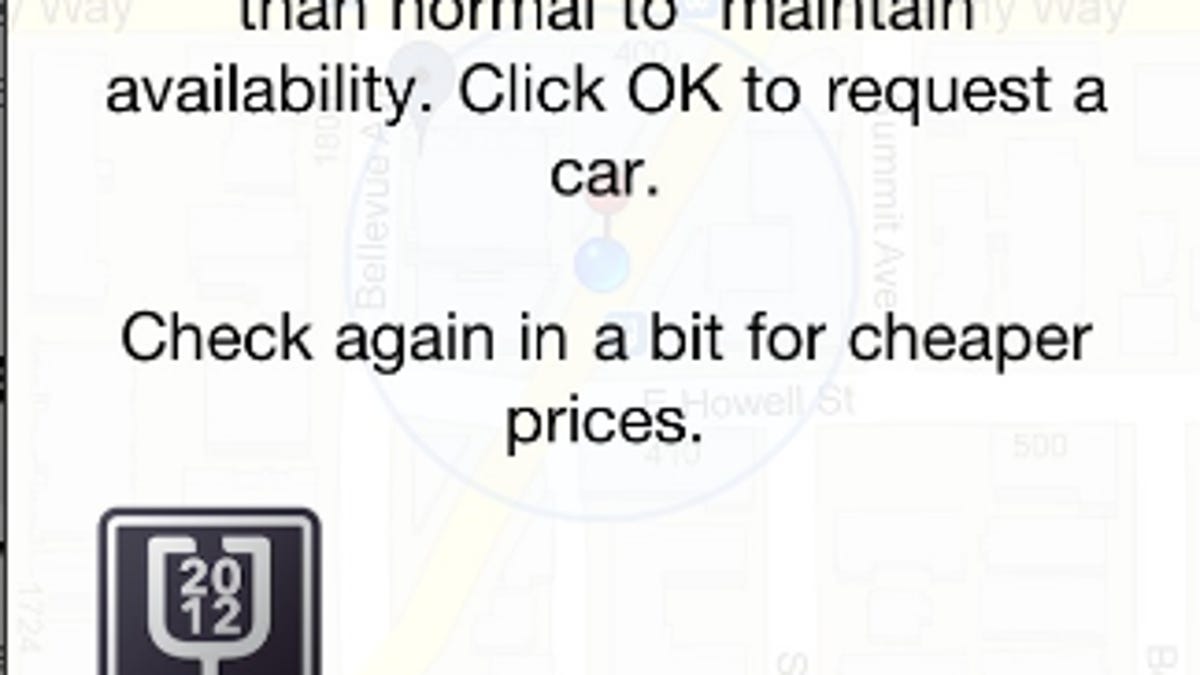Uber's 'surge pricing' surprises some users
Variable-pricing model increases the rates for rides with the limo-booking service, surprising many New Year's Eve revelers.

Some Uber users are complaining of being taken for a ride New Year's Eve.
Many customers who summoned rides from the limousine-booking service with apps on their phones say they were surprised by the suddenly higher fees they were paying for short rides. Entrepreneur Brendan Mulligan, who says he has been using the service for nearly two years, was shocked to learn that he was charged five time what he normally would have paid for the ride home.
"We could have walked, as it's only about a mile, but it was late and we were tired," Mulligan wrote in a blog. "Normally the price would have been $15. Last night, for our 2 minute and 16 second ride, we paid $75."
Another user complained on Twitter of "unknowingly" being charged $125 "to go 2 miles."
Those sentiments were echoed by nearly 100 customers who complained to the company about the service's so-called "surge pricing," which it puts into effect when it anticipates high demand for rides, Uber told AllThingsD.
The company, which has instituted surge pricing in the past, defended the price increase in a blog post, saying that variable pricing allows it "to provide a reliable ride to anybody who needs one, no matter how crazy demand is or what is going on in the city."
In another blog post that features a chart reminiscent of an economics text book, the company explains how its dynamic pricing model is based on simple supply and demand.
We raise the price of our service when the supply of available cars gets tight. [Example: If there are 300 on the Uber system in a city and 290 of them are picking up a rider or in trip, then this would be considered an extremely tight supply situation.] We raise the price in increments over time based on supply health. When supply opens up, we then lower the price.
Even though the company says pricing is clearly explained on the company's Web site and that the price increase is prominently listed on users' app screen, some customers say they weren't adequately informed of the price hike.
"I'm all for price elasticity, but need to know in advance," Aaron Bird, a Seattle charity executive, wrote in a Twtter post.
The company told AllThingsD that it is reviewing complaints and issuing refunds on a case-by-case basis.
The service, which launched in 2012 to rave reviews, allows users to send a text message or an iPhone or Android app to request car service in in seven cities, including San Francisco, New York, Washington, D.C., and Paris. A limousine driver registered with Uber arrives promptly.

